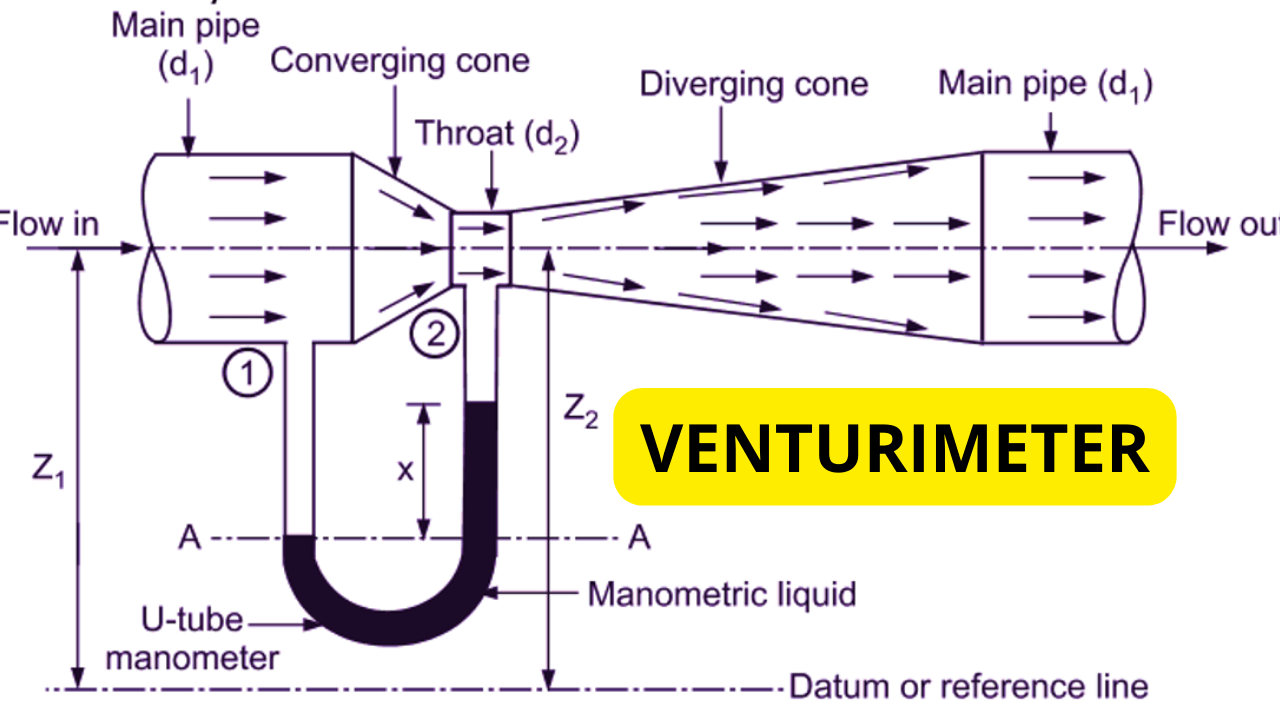When talking about fluid mechanics, the conversation is incomplete without a hydraulic bench. What seems to be a rather useful apparatus in hydraulics is commonly used in several experiments. Whether the experiments are conducted to find the value of the coefficient of velocity, Cv, or coefficient discharge, Cd, it can be done with the help of a hydraulic bench apparatus. But first, you will need to understand hydraulic bench parts and functions, and their common uses.
Table of Contents
What is a Hydraulic Bench
The hydraulic bench is a volumetric flow measurement apparatus that consists of a water receptacle present at the bottom, through which water is pumped up to an open channel through a control valve by a centrifugal pump. This water is finally discharged into the volumetric tank and the change in level of water in the volumetric tank, as given by the calibrated scale, gives the flow rate.
A hydraulic bench may also be used to supply water to other apparatuses for their work.
How Does a Hydraulic Bench Function?

The hydraulic bench diagram shows the general working or functioning of the water supply.
The water is stored in a sump tank. When the motor is turned on, this water is pumped up to the open channel through a suction pipe which is kept transparent to identify the onset of the cavitation process, in case it commences.
This open channel is the water source for the volumetric hydraulic bench tank and therefore, the water flows from the channel to the tank present at a relatively lower elevation. Finally, this water is made to outflow the tank back into the reservoir or sump tank.

There are a few technical details that are provided by the manufacturer mentioning parts of the hydraulic bench apparatus such as:
- Pump Type
- Maximum Head
- Maximum Flow
- Motor Rating (kW)
- Sump Tank Capacity (Liters)
- High Flow Volumetric Tank (Liters)
- Low Flow Volumetric Tank (Liters)
- Height of working surface above floor level
It is important to keep these technical details in mind before jumpstarting the project.
12 Parts of Hydraulic Bench Apparatus
The following labeled figures show different parts of hydraulic bench parts and their functions in detail.




1. On/Off Switch for Motor
In order to start the motor of the centrifugal pump, the motor switch is turned on. This results in the initiation of the pumping process.
2. Discharge Control Valve
This valve controls the flow rate into the volumetric tank. A clockwise rotation tends to decrease the discharge and a counterclockwise rotation increases the flow rate.
3. Sight Tube and Scale
A sight tube present close to the discharge control valve gives an instantaneous value of the flow rate into to volumetric tank and the value can be read from the scale present beside the tube.
4. Volumetric Tank
This tank is present downstream of the open channel and is an important part of the volumetric hydraulic bench. It receives water from the open channel. However, the flow rate into this tank is governed by the discharge control valve. The change in the level of water in the tank is determined by noting the difference in the level of water given by the sight tube.
5. Open Channel
This channel receives pumped water from the sump tank. The flow rate into this channel is governed by the flow control valve present beneath it.
6. Centrifugal Pump
Another part of the hydraulic bench is the centrifugal pump that converts the mechanical energy of the motor into hydraulic energy by the action of centrifugal force. As a result, the water is pumped up from the sump tank and is permitted into the open channel by the flow valve.
7. Sump Tank
A sump tank is actually a water reservoir present at the bottom of the hydraulic bench apparatus. The water is pumped from the sump tank into the open channel. When the volumetric tank reaches a certain level, it empties into the sumo tank, and the process is repeated.
8. Control Valve
This valve controls the flow from the sump tank into the open channel. It can help in increasing or decreasing the water inflow in the hydraulic bench
9. Stilling Baffle
This part of the hydraulic bench acts as a stopper for water to retain in the open channel. When water travels up into the open channel, the inlet stilling basin helps dispersing the water stream, thereby, keeping water in the channel.

10. Tank Stilling Baffle
When water enters the volumetric tank from the open channel, a tank stilling basin ensures smooth gliding of water. If this is not provided, the water that strikes the tank bottom may produce some local turbulence. This may result in continuous fluctuation of water level that can be seen from the sight tube. Therefore, the discharge measurement may give misleading results.
11. Dump Valve Handle
A dump valve handle is used to drain water from the volumetric tank back into the sump tank. This can be achieved by raising the handle. Additionally, the overflow in the volumetric tank puts a limit on its maximum capacity, after which water dumping is indispensable.
12. Actuator
To operate a dump valve you will need an actuator. It lists up the damp valve at a turn of 90 degrees for an open position
What is Discharge Measurement in a Volumetric Tank
In order to measure the discharge into the volumetric tank, measure the initial level of water on the sight tube. Once the water is discharged in the tank from the open channel, note the final reading on the scale. Also, measure the time taken for water to fill the tank to a certain depth.
The discharge can then be mathematically calculated as,

Most Common Uses of Volumetric Hydraulic Bench
Hydraulic bench can be employed for a number of hydraulic operations that include the following:
- It ensures the provision of an uninterrupted and controlled supply of water for various laboratory experiments.
- It helps measure the flow rate or discharge.
- It recirculates water and therefore, behaves as a self-contained and portable mobile unit.
Most Used Applications of Hydraulic Bench
Hydraulic bench aids in determining different properties of fluid and fluid flow, and provides continuous and controlled water supply using auxiliary modules. Some of the most used applications of a hydraulic bench are mentioned as follows.
- For determining the Coefficient of Velocity,
- For determining the Coefficient of Discharge,
- For determining the Coefficient of Contraction,
- For studying flow characteristics over weirs and notches
- For finding the metacentric height
- For finding head losses through pipes
- For verification of Bernoulli’s theorem
- To determine jet trajectory and orifice flow
- To determine the losses in piping systems
- To ensure the flow meter calibration
Handling Hydraulic Bench Safety Precautions to Follow
Hydraulic bench comes with an instruction manual that explains the maintenance and safety precautions.
Some of these safety precautions include:
- The operating instructions must carefully be read and understood preceding the usage.
- It is preferable to handle hydraulic fluid wearing gloves and safety goggles.
- Remember to close the valve before you turn on and off the pump.
- During the operation of the pump, open and close the valve carefully and slowly.





